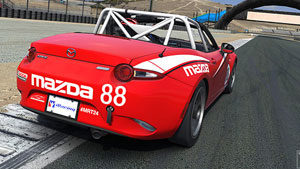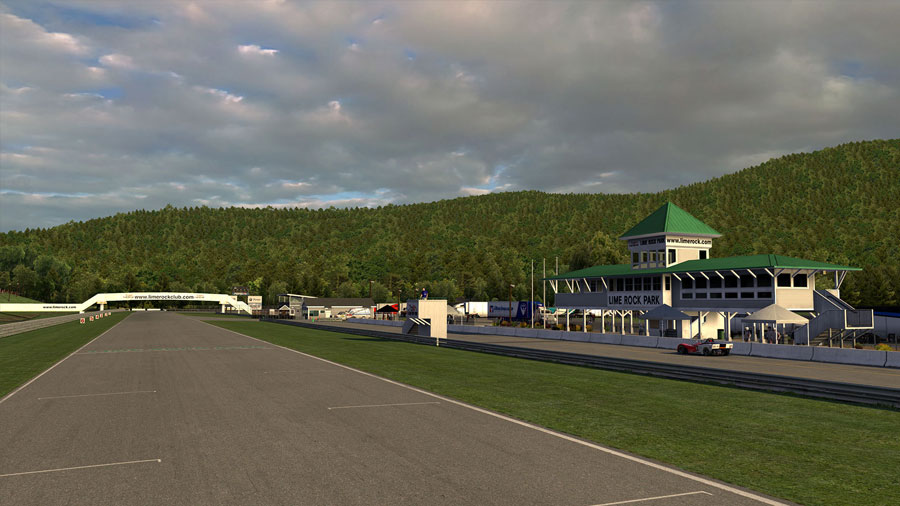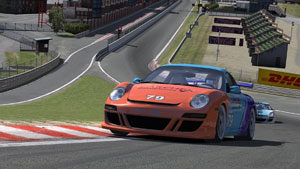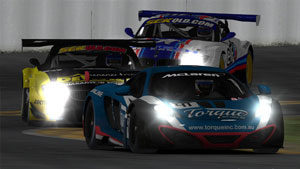
You can try any car, but for road you’ll need the Pontiac Solstice or Global Mazda MX-5 in order to progress from Rookie license to license class D. We recommend the Global Mazda MX-5 Cup car. The Mazda is light and low-powered, so maintaining cornering speed is key. This is perfect for learning.
Recommended practice tracks are Lime Rock Park, Summit Point Raceway and Okayama Short. The Mazda goes really well on these circuits, plus they’re short so you’ll learn them more quickly. Alternatively, you can check which weekly track the Global MX-5 Cup series races at, and load that for your private test session.
It’s important to join a private test session first, before joining a public session, let alone a race. A simulator isn’t something you can just jump into, plus there are some things you need to learn about iRacing. We recommend you spend a good portion of the week in a private session. (We’ll talk more about this in scheduling)
And make sure you select Default Weather.
Default Weather explained
iRacing sessions can be held in outside temperatures from 18 to 32 degrees Celsius (65 to 90 degrees Fahrenheit), which greatly affects the performance of your tires and thus your laptime. It’s best to use Default Weather to allow better comparison with future laptimes and to then compare with other telemetry data, or VRS data packs which are always driven in Default Weather also.

Load the sim, set your video settings to what your computer can handle and calibrate your wheel and pedals. Then, set the Field of View via the calculator in-sim in graphics options. YouTuber KrazyDan explains it in this video.
Field of View explained
The FOV is very important to get right, otherwise your screen won’t display accurate real-world proportions for your view of the cockpit, track and your perception of distance and speed. If your FOV is off, your judgement and reactions will likely be off as well. Avoid choosing a wider view because you want to see your mirrors or your wheels, it’ll likely hurt your performance.
In the graphics menu, you can find your FOV settings. Measure your monitor and your distance from it, and let iRacing calculate your FOV. Single monitor users may find it necessary to compromise with a slightly higher value than calculated, but you can reduce the need for this by having the monitor as close as possible.
Going around
Don’t worry about the actual setup of the car itself, there’s no need to ever change the setup of the car if you’re not racing at the limit (and we’re not expecting you to do so right off the bat!). Just drive the track, get a feel for the weight and responsiveness of the car and, if new to “hardcore” simulations, you’ll likely realise this is unlike any other game you’ve ever driven.
Focus on driving clean laps, not going off-track, not locking wheels or getting all out of shape. Focus on hitting your apexes, finding the ideal line through the corners. Treat it like the real thing and try not to crash, as that will only demotivate you. Drive within your limits and slowly up the ante as you get more comfortable.
Going faster
Try to lap consistently within a second of your best lap. Don’t worry if it takes you a few hours to get to that level, it’s normal. As we said: sim racing is hard.
But once you reach that level of consistency, you can head over to YouTube and search for some hotlaps in your car and track combination, or check out one of the Virtual Racing School Data Packs. Take note of braking, turn-in, and apex points and the line taken through entry and exit.

Up to you:
Avoid rushing into a public practice session just yet. Practice in a private session! Before going ‘public’, consider reading up on ergonomics.

 Simracing is harsh, and if you expect things to come easily, you’ll be quickly demotivated. Getting good is a long term project that requires time, money and focus. Here are four key areas to keep in mind as you plot your way towards all those simracing victories, which all four have to do with setting correct expectations.
Simracing is harsh, and if you expect things to come easily, you’ll be quickly demotivated. Getting good is a long term project that requires time, money and focus. Here are four key areas to keep in mind as you plot your way towards all those simracing victories, which all four have to do with setting correct expectations. Simracing is brutal. You may think of yourself as a real racing driver, having raced in the likes of Gran Turismo or Forza Motorsport, only to be proven utterly wrong while racing on similar tracks in similar cars in a full-bred racing simulator. Here’s what help you can expect from us.
Simracing is brutal. You may think of yourself as a real racing driver, having raced in the likes of Gran Turismo or Forza Motorsport, only to be proven utterly wrong while racing on similar tracks in similar cars in a full-bred racing simulator. Here’s what help you can expect from us.